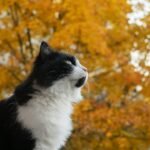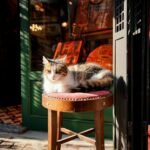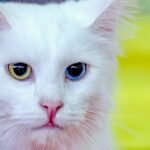The domestication of cats is a fascinating journey that traces back thousands of years. Felis silvestris, commonly known as the wildcat, is the ancestor of today’s domestic cats. These wildcats were native to Europe, Asia, and Africa. The transformation from wild to domestic was influenced by human development, particularly the advent of agriculture.
The Role of Agriculture in Cat Domestication

About 10,000 years ago, the Neolithic Revolution brought significant changes as humans transitioned from hunting and gathering to agriculture. This shift led to the establishment of permanent settlements, which attracted rodents due to stored grain supplies. Wildcats, drawn by this steady food source, began frequenting human settlements, marking the beginning of a mutually beneficial relationship.
Natural Selection: The Friendlier Wildcats

Unlike other domesticated animals, cats played a more active role in their own domestication. Rather than being selectively bred by humans, friendlier and less fearful wildcats benefited from staying near human populations. Over generations, these traits became more pronounced, leading to a divergence from their strictly wild counterparts.
The Significance of Cats in Ancient Societies

Cats soon became an integral part of several ancient societies. In Egypt, they were revered and even worshipped. The Egyptians valued cats for their ability to control pests and protect food stores, which was crucial for their agricultural economy. Over time, cats became a symbol of grace and protection, deeply entrenched in Egyptian art and mythology.
Spread Across Continents: Trading and Exploration

As human societies expanded through trade and exploration, cats were carried along, spreading their influence far beyond their native ranges. Phoenician traders are believed to have introduced cats to Europe, where they quickly adapted to new environments and began to spread across the continent.
The Role of Genetics in Understanding Cat Domestication

Modern genetic studies have shed light on the domestication process of cats. DNA analysis reveals that domestic cats share significant genetic similarities with wildcats, indicating a relatively recent divergence. This genetic continuity suggests that domestication did not involve extensive selective breeding, unlike many other domesticated animals.
Social and Behavioral Changes

While the physical appearance of domestic cats may closely resemble their wild ancestors, some behavioral changes have occurred. Domestic cats are more tolerant of humans and other animals, exhibiting less aggressive behavior and a stronger inclination to socialise. These traits were beneficial in coexisting with human societies, facilitating their integration into human homes.
Cats in Folklore and Mythology

Throughout history, cats have been woven into the folklore and mythology of various cultures. From being venerated in Egypt to being associated with witchcraft and superstition during the Middle Ages in Europe, cats have played diverse roles in the cultural narratives of human societies.
The Evolution of the Human-Cat Relationship

Over time, the relationship between humans and cats has evolved. From mutual benefit and utility, it has grown into companionship. Today, millions of domestic cats live as cherished pets, contributing to the emotional well-being of their human families and forming a unique interspecies bond.
The Future of Cats in Human Society

As we seek to understand the past journey of cats from wild to domesticated, it’s important to also consider their future. Cats continue to play significant roles in human societies, adapting to urban environments and changing lifestyles. Understanding and managing their welfare, genetic diversity, and role in ecosystems will be essential in shaping the future of this longstanding partnership.
The story of cat domestication is a nuanced and ongoing one, reflecting a complex interplay between human development and animal adaptation. As our understanding deepens, so does our appreciation for these enigmatic creatures that have shared our lives, homes, and histories.

Growing up traveling and experiencing new cultures and wonders, I have had a passion for nature, adventuring, photography, and videography. I am currently working towards a BSc in Biodiversity and Ecology at Stellenbosch University, and I hope to specialise in Marine Sciences one day.
Please send any feedback to Feedback@animalsaroundtheglobe.com




